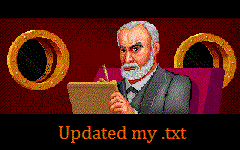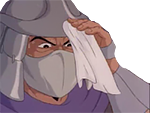Just think. Whenever he's chatting away in one of his videos, there's a very good chance he has his husband's seed swimming around inside his asshole.

Just think. Whenever he's chatting away in one of his videos, there's a very good chance he has his husband's seed swimming around inside his asshole.




Would be hotter if it was my seed.hotJust think. Whenever he's chatting away in one of his videos, there's a very good chance he has his husband's seed swimming around inside his asshole.



Cursed items should be more prominent.a pet peeve of mine is fiddling with forgotten magic/tech in RPG's. Like, you should have no way of knowing if what you're doing is dangerous, but it always gets telegraphed in some way
Context is easily recognizable. A person from rural Brazil with little to no contact with the outside world is still gonna understand that if the giant, cuboid building with billowing spires beside it starts making a *whirrrrr* noise and getting really hot he should get out of there and run as far away as possible.a pet peeve of mine is fiddling with forgotten magic/tech in RPG's. Like, you should have no way of knowing if what you're doing is dangerous, but it always gets telegraphed in some way
>person who has never seen a car fucks around with carContext is easily recognizable. A person from rural Brazil with little to no contact with the outside world is still gonna understand that if the giant, cuboid building with billowing spires beside it starts making a *whirrrrr* noise and getting really hot he should get out of there and run as far away as possible.a pet peeve of mine is fiddling with forgotten magic/tech in RPG's. Like, you should have no way of knowing if what you're doing is dangerous, but it always gets telegraphed in some way
Underrail if you treat it like Fallout and assume skill points alone are going to carry you. Before that maybe Oblivion because a poorly made custom class would get steamrolled by the level scaling.Tim laments the ability to make a character in an RPG that get brickwalled, but is this even applicable to any game made in the past decade?

Tim getting upset over a niche RPG meant for hardcore powergamers would be a bit petty.Underrail if you treat it like Fallout and assume skill points alone are going to carry you.
Oblivion was nearly 20 years ago, ancient history.Before that maybe Oblivion because a poorly made custom class would get steamrolled by the level scaling.


Story 3) Sierra wanted to do a contest where fans would submit a character background that would get implemented into Arcanum. Tim had big and justifiable concerns about Quality Control and apparently this spiraled into a massive argument. They ultimately didn't do it, and I believe that was for the best. Tim did nothing wrong here.
Probably one of the few employees Tim fired "because he deserved it".and that employee tattled to Leonard
Story 3) Sierra wanted to do a contest where fans would submit a character background that would get implemented into Arcanum. Tim had big and justifiable concerns about Quality Control and apparently this spiraled into a massive argument. They ultimately didn't do it, and I believe that was for the best. Tim did nothing wrong here.
I agree. And I see a huge problem here that he mentioned several times before: if any of the contest backgrounds would have looked similar to one that they created already, the contest author would probably felt ripped off.


Also, for what ever reason, I didn't quite pick up that Tim lives in Seattle? Theoretically, I could one day bump into him one day.

But.. but he didn't mention my Pillars of Eternity interview at PAX East?!! I scooped that it was to have two expansions and that Tim owned the ToEE code!! So soon forgotten to time's past...Liked this video, interviewers that just do a shit job of not asking actual good questions has always just annoyed the shit out of me to (as well as Tim).
Also, for what ever reason, I didn't quite pick up that Tim lives in Seattle? Theoretically, I could one day bump into him one day.
I also just always assumed Tim was shot too... lol

His refusal to do the coding is understandable.Story 1) Tim wasn't allowed to participate in Arcanum design meetings because everyone thought he dominated them and was not very diplomatic in telling people their ideas were stupid. As a result, he refused to implement the tech schematics they had come up with and someone else had to do them. Pretty petty move, sure.

It strikes me as very feminine behavior e.g. https://academic.oup.com/ej/article-abstract/130/627/716/5715606?redirectedFrom=fulltext&login=falseHis refusal to do the coding is understandable.
They didn't want him involved in the tech schematics design, so he didn't get involved.
The design is done, it's just a lot of grunt work now, let them get a programmer do it.
And if the feature didn't go well, they could argue that he sabotaged it with his implementation.
On the team's side, it gives them independence and a nice challenge without a "Uncle Tim" safety net to rely on.
Being completely hands-off in this scenario is a good move.
We study the effect of likeability on women’s and men’s team behaviour in a lab experiment. Extending a two-player public goods game and a minimum effort game by an additional pre-play stage that informs team members about their mutual likeability, we find that female teams lower their contribution to the public good in the event of low likeability, while male teams achieve high levels of co-operation irrespective of the level of mutual likeability. In mixed-sex teams, both women’s and men’s contributions depend on mutual likeability. Similar results are found in the minimum effort game. Our results offer a new perspective on gender differences in labour market outcomes: mutual dislikeability impedes team behaviour, except in all-male teams.


A loot table is a list of items that can be placed on a creature when it's spawned/kill (Cain prefers to do it when they spawn because his games involve pickpocketing, generally games have it so the loot just spawns when the creature dies)
Several ways to handle loot tables:
* List of items, pick a select amount of them at random, that's what appears on the creature.
* Every item has a probability assigned to it, roll for each item down the list, if they roll for it, they get it.
*Combination, select amount of items, each has probability.
Cain's personal favorite way is to have an intersection between player level and item type that has the list have the best gear for a given level be from that given source (i.e the best helmet for level 50 players is found on a quest, the best leggings at level 30 are found in crafting)
If the level ranges get too high, it could be a long time until the players find a loot source, if the ranges are too narrow, player keeps jumping through new sources.
More loot types then sources will cause either some types will always overlap sources or you can decide one source should never have the best equipment (i.e crafting)
Different sources for ideal gear can help you with a multiple class setup where different characters go for different ways to get loot.







